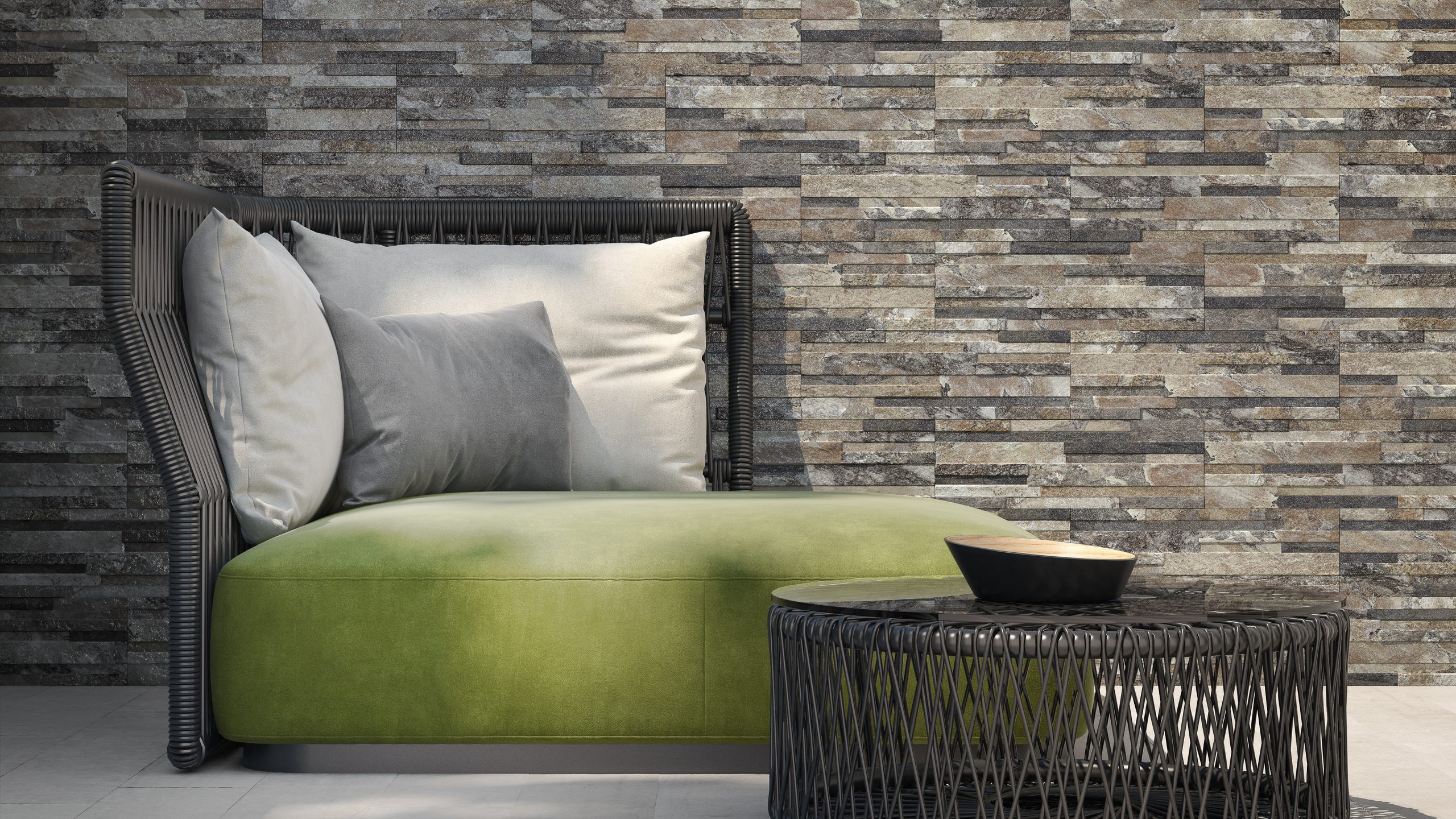For centuries, stone walls have been a key feature of rural architecture and a traditional way of marking the boundaries of houses and land. However, today’s trends in interior design and architecture have given natural stone a new role as a covering for terraces. Indeed, contemporary stone slabs are a common design feature for exteriors, adding warmth, texture and colour to spaces
Natural stone or porcelain tiles?
Yet although the aesthetic effect is magnificent, there are a number of factors for consideration when laying stone in exteriors, in particular its maintenance and resistance. In fact, natural stone has three principal drawbacks when used on terraces:
- Damp: water penetrates natural stone to a greater degree than ceramic tiles.
- Climate: natural stone is not as resistant to UV radiation, frost or other weather phenomena.
- External substances: examples include food, oils or chemical products; in fact, the stains can be irreversible.
- Price: the fact that this material is extracted naturally, it is far more expensive than ceramic tiles.
In contrast, and always seeking a truly natural effect, the latest technologies in ceramic tile printing produce incredibly realistic finishes, with textures and reliefs that imitate the veining of slate, rock, quartzite and other types of natural stone.
The advantages of porcelain tiles
Architects and designers rate natural stone-effect tiles particularly highly: the wide range of colours, textures and formats make them a great choice for innovative and surprising projects.
Thanks to the excellent technical features of stone-effect porcelain tiles, they stand out for their numerous advantages that will enable us to create a space with a practical and versatile design.
- Resistance. This is an aspect we have discussed in previous posts, and it is one of the greatest attractions of ceramic tiles. Whether intended for use on floors or walls, ceramic tiles are incredibly resistant to scratches, abrasion and stains…and what’s more, they can withstand high temperatures. They are also resistant to chemical agents and will remain unaltered.
- Durability is another major advantage. Ceramic tiles are not affected by the passing of time: even when laid on your terrace walls, they will continue to look brand new for many years, keeping all their quality and colour.
- Porosity. Unlike natural stone, ceramic tiles have an extremely low level of porosity. This is because they are made from a pressed material, which minimises their capacity to absorb water, and therefore acids and dirt as well. This is a key factor when considering questions such as cleanliness and easy maintenance.
- Hygiene. On exterior walls in particular, damp and mildew are a common sight. Thanks to their imperviousness, porcelain tiles limit the spread of bacteria, thereby preventing this problem.
In short, the ceramic tile sector’s cutting-edge technologies allow us to manufacture stone-effect tiles that are extremely realistic in appearance and very similar to natural stone; in fact, not everyone can tell the difference between them. Much progress has been made in the moulds and reliefs which now feature straighter, more rounded and curved forms with widely ranging degrees of depth. Furthermore, advances in ceramic tile printing allow the realistic reproduction of the veining and details of natural stone, creating the perfect mix of beauty and functionality and replicating myriad types of natural stone.
A selection of models by Pamesa
Our catalogues feature a wide range of colours, formats and styles to help you choose your natural stone-effect wall tiles. Here are just a few examples:
- Block, this 16.3 x 51.7 cm porcelain tile series has a particular characteristic that sets it apart from the rest: in addition to the stone-effect, it is also available in a marble-effect finish.
- New for 2023 is the Facciata series, which comes in a 20 mm thickness and 30×60 cm format and has a realistic natural slate-slab effect.
- Another option is Eos, a model available in six colours and 15×52 cm format, which also includes a special range: the same relief, but in a wood effect, created for the most daring.
- The Erice series is similar to the previous one, available in five colours and a 17×52 cm format, although the mould is different from Eos.
- Made with a more irregular mould and in a larger 34×50 cm format, the Britania series is included in our Atrium catalogue.



